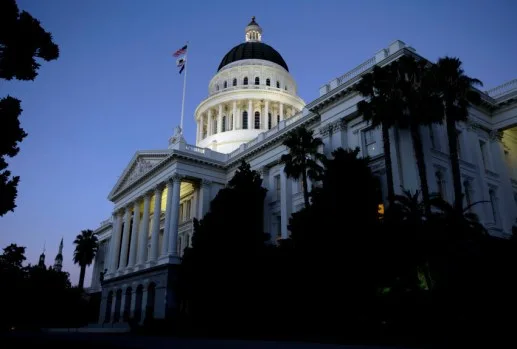
Legislators in the California State Capitol have proposed two bills offering an apology for the state’s legacy of slavery and compensation to African Americans who lost property due to discriminatory policies.
The California State Assembly recently announced a set of bills that would offer African American residents reparations. Since the publication of the Reparation Task Force’s report last June, several Assembly members have proposed bills that would offer an apology and provide compensation to African Americans who lost property due to discriminatory policies.
Assemblymember Reggie Jones-Sawyer’s bill (AB 3089) would offer an apology for the state’s legacy of slavery and discrimination, while state Sen. Steven Bradford’s proposed SB 1050 would provide compensation to African Americans who lost property due to discriminatory policies.
These bills offer our state an important opportunity to rectify past injustices and combat existing discrimination. They also provide our community a chance to heal and set an example for the rest of our nation. Although Californians remain divided on what reparations should look like, there is evidence that redress helps to address systemic racism.
Perhaps the best example of this is the redress provided to Japanese Americans who were unjustly incarcerated during World War II. In 1988, our country offered an apology and small payments to surviving Japanese Americans who were incarcerated. Since then, our state has supported efforts to educate the public on the incarceration and address anti-Asian discrimination.
Even when our country was faced with the question of offering compensation to Japanese Americans 40 years ago, our country was also divided. A San Jose Buddhist priest, Kyoshiro Tokunaga, offered a stirring message in support of redress: that there is an American karma for past injustices.
During World War II, the FBI imprisoned Tokunaga for five years in part for being a Buddhist priest. Over the course of his imprisonment, Tokunaga and other Japanese American inmates endured mistreatment. While being escorted to the Lordsburg Camp in New Mexico, he witnessed two fellow prisoners shot and killed by an Army guard. On several occasions, the guards locked Tokunaga and his friends in their barracks.
One of the few positive moments during Tokunaga’s incarceration was when an African American porter revived him after he fainted during the train ride en route to another prison. When he was released from the Crystal City Internment Camp in Texas in July 1946 — almost a year after the war ended — he boarded a train bound for Denver. As the train was segregated, he chose to sit with the African American passengers out of solidarity. When a conductor told him to move to the whites only car, he refused. Later in life, he cited these events as the starting point for his involvement in the redress movement.
After the war, Tokunaga served as a minister at the San Jose Buddhist Church on North Fifth Street. When Tokunaga retired in 1981, Representative Norman Mineta paid tribute to Tokunaga before Congress, describing him “a picture of man of compassion and humility.”
During the 1980s, Tokunaga joined a class-action lawsuit that sued the United States government for wrongfully detaining Japanese Americans during the war. When the San Jose Mercury News interviewed him about joining the lawsuit, Tokunaga explained: “As a Buddhist I believe there is a karma for nations as well as people. The American karma is the actions and deeds of the past. It is something we cannot escape. … I joined the lawsuit because I hope America will not repeat these mistakes.” The lawsuit pushed the U.S. government toward adopting the Civil Liberties Act of 1988 that provided redress.
We should heed Reverend Tokunaga’s words. We should not shy away from but rather face the misdeeds of our country’s past. As Tokunaga preached with redress for Japanese Americans four decades ago, we should do the same for African Americans. Passing these bills will be an important first step in redressing the legacy of racism in our state. It will also serve as a model to the rest of the country for reconciling with our past and toward dismantling systemic racism.
In other words, it repairs our American karma.
Jonathan van Harmelen is a Ph.D. candidate in history at UC Santa Cruz. He writes for the Japanese American National Museum’s blog Discover Nikkei.

